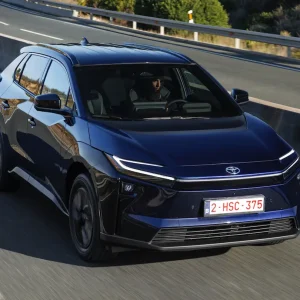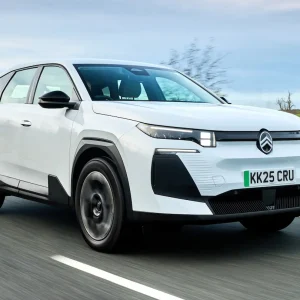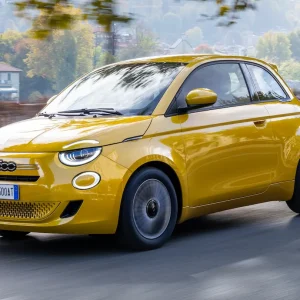After six years on sale, and a facelift, Citroen’s C5 Aircross C-SUV received further upgrades last summer, with an increase to 41 miles of EV range and like the rest of the Citroen models, the C5 Aircross received new You, Plus, and Max equipment grades, replacing the previous Sense Plus, Shine, and C-Series.
Outside, there are no changes since the 2022 facelift, where the C5 Aircross got what Citroen describes as a ‘vertical’ and ‘more assertive’ look. At the front, this means the distinctive V-shaped LED lights signature with darkened headlights, a gloss black grille with clever chrome detailing linking the chevrons to the light signatures and a revised front bumper with skid plate. While at the back, the facelifted C5 Aircross is identified by new lights – this time in ‘3D’ design.
Inside, there are no further changes since the C5 Aircross’s facelift. They were minimal as there wasn’t much wrong with the interior, but revolved around a revised centre console, plus a higher definition 10in touchscreen infotainment system placed high up.
During the week we had this Citroen, it carried four and a dog on a holiday to Devon, and even this reviewer’s children were complimentary as to how comfortable the rear seat was! We also found the fact that the three seats can slide forward and back to aid boot space, very useful for packing – yet there’s still sufficient legroom in the back. In fact, the only gripe was with the infotainment, which feels a generation behind.
Mechanically, the 225hp Plug-in Hybrid combines a 1.6-litre petrol engine with an electric motor and 13.2kWh battery. It is now capable of 41 miles of EV range, reducing CO2 emissions to 29g/km, and of even more interest to fleet, reducing its BIK liability to 8%. Charging every day equalled an impressive 52mpg over the course of 1,000 holiday touring miles.
Despite the longer EV-only range, this car felt largely the same as an early example driven on the international launch in France. Like other PHEVs from the same Stellantis stable, such as the Peugeot 308 SW and Vauxhall Astra, to get the most out of the battery in everyday driving, we felt it was best to quickly move modes from ‘Electric’ to ‘Hybrid.’ This equals silent EV progress, until we’re free of towns and the open road awaits – and doesn’t just stay in electric literally until it drains the battery. Then, the power is almost seamlessly switched to the petrol engine. It is mostly seamless, as if you need to make a sudden overtake, the engine has to work hard – and you can hear more of it than you’d like. We’d say you’re best off avoiding the ‘Sport’ mode too, as it just makes the throttle more sensitive, with more boomy engine noise as a result and seemingly not much more performance. It all just feels a bit out of place with the overall comfort and refinement experience that the C5 Aircross offers.
After 1,000 miles together, comfortable and refined best sums up the C5 Aircross’s ride – even with the standard 19in wheels of our test car. This is the result of Citroen’s impressive Advanced Comfort Suspension system. As such, even on the roughest road surfaces, the C5 Aircross absorbs most shocks and vibrations. In general, the ride is composed, but every now and then it can feel fidgety and floaty.
The C5 Aircross Plug-in Hybrid is not a dynamic drive; if you’re looking for that go elsewhere. However, despite the focus on comfort, the handling itself is tidier than expected. There is some body roll, but impressive levels of grip.
The C5 Aircross remains the comfortable, refined SUV it has always been. The PHEV version adds an extra layer of refinement and proven day-to-day running cost savings.
Citroen C5 Aircross 1.6 Plug-in Hybrid Max
P11D: £37,565
Residual value: 40%
Depreciation: £22,690
Fuel: £2,237
Service, maintenance and repair: £2,384
Cost per mile: 45.51p
Fuel consumption: 222.3mpg
CO2 (BIK %): 29g/km (8%)
BIK 20/40% a month: £51/£102
Luggage capacity: 580 litres
Engine size/power: 1,598cc /180hp + 80kW electric motor





